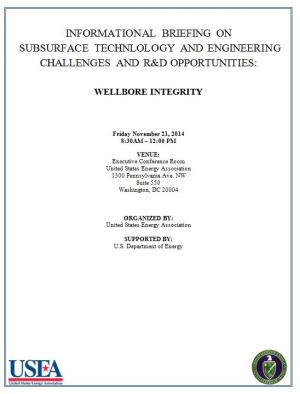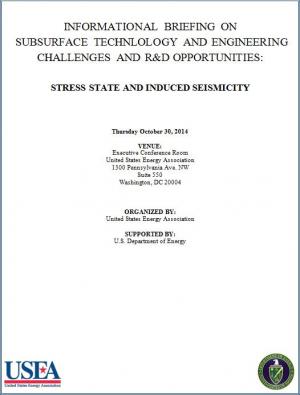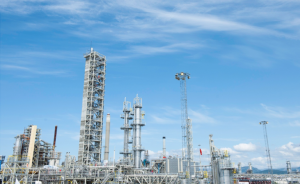December 18th, 2014
The U.S. Department of Energy is seeking to understand the broader technical challenges related to subsurface technology and engineering for energy applications such as oil and gas, carbon storage, geothermal, and waste disposal. This briefing will aim to facilitate a dialogue with industry on what they perceive as the key challenges and opportunities regarding new subsurface signals.
December 15th, 2014
This presentation assesses the benefits of CO2 and compares these to estimates of the social cost of carbon (SCC) that have been published by the Federal government. CO2 is the basis of life on Earth, and the successful development of fossil fuels, which generate CO2, facilitated successive industrial revolutions, created the modern world, and enables the high quality of life currently taken for granted. There is a strong causal relationship between world GDP and CO2 emissions over the past two centuries, and this relationship is forecast to con
December 8th, 2014
The social cost of carbon (SCC) is a monetary estimate of the climate change damages to society from an additional unit of carbon dioxide (CO2) emitted to the earth’s atmosphere. In 2010, the United States Government (USG) developed SCC estimates to value the benefits of CO2 emissions reductions in federal rulemakings; and in 2013, the USG revised their estimates, and the SCCs notably increased. Despite their use, the USG SCC estimates are difficult to interpret and evaluate. What does the central value of $37 per metric ton of CO2 represent?
November 21st, 2014
The U.S. Department of Energy is seeking to understand the broader technical challenges related to subsurface technology and engineering for energy applications such as oil and gas, carbon storage, geothermal, and waste disposal. This briefing will aim to facilitate a dialogue with industry on what they perceive as the key challenges and opportunities regarding wellbore integrity.
October 24th, 2014
NTDC executives will give an overview of the Pakistan energy sector and NTDC, discuss challenges and opportunities, and outline future plans for the transmission network.
October 30th, 2014
The U.S. Department of Energy is seeking to understand the broader technical challenges related to subsurface technology and engineering for energy applications such as oil and gas, carbon storage, geothermal, and waste disposal. This briefing will aim to facilitate a dialogue with industry on what they perceive as the key challenges and opportunities regarding stress state and induced seismicity.
January 22nd, 2015
The CCP is a partnership of several oil and gas companies working together to advance CCS technologies since 2000. The third phase of work, which operated between 2009-2014, helped deliver 3 significant demonstration projects, amongst numerous other component achievements. The fourth phase of work is planning to make further advances in CCS technology deployment and knowledge for the oil and gas industry. This presentation will summarize our achievements and seek input on our forward plans.
December 16th, 2014
The growth in natural gas-fired power generation continues to be driven by relatively low gas prices, as well as existing and expected environmental regulations. Other emerging factors will both accelerate and hamper this growth, i.e. increasing needs for operational flexibility and the potential need to capture CO2 from gas-fired generation units. Growing variability in dispatch of firm assets as a result of increasing renewables deployments, distributed generation, and load management makes natural-gas fired generation attractive.
November 20th, 2014
Everyone likes to cite the statistics for the number of coal plants being built each week/month/year in China. Yet, this is only one part of the story. For example, in January 2013, China’s State council approved a national energy consumption control target (4 billion tonnes of coal equivalent by 2015) which caps total energy growth just above 3 percent per year through 2015.
Pages




